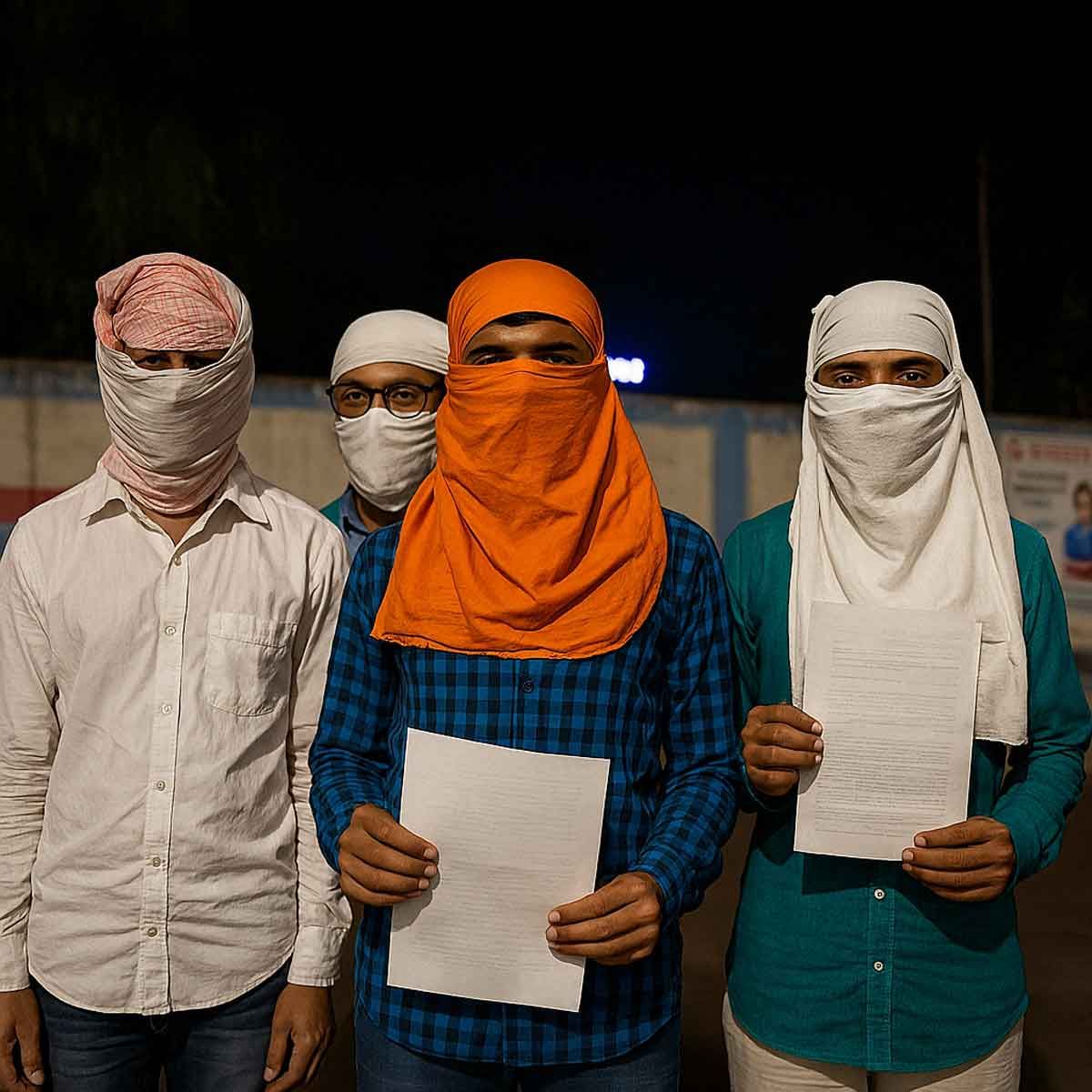More Coverage
Twitter Coverage
Satyaagrah
Written on
Satyaagrah
Written on
Satyaagrah
Written on
Satyaagrah
Written on
Satyaagrah
Written on
JOIN SATYAAGRAH SOCIAL MEDIA
"Historic launch of Chandrayaan-3": A lunar mission set to make India the fourth nation to land on the moon, encompassing technological marvel, scientific discovery, and national pride, carving out India's place in the annals of space exploration

Hold your breath! The time is nearly upon us for a major milestone in India's space exploration saga, as Chandrayaan-3, India's latest lunar mission, is preparing for lift-off. The countdown has begun at the Sriharikota spaceport, and the energy is palpable. If successful, this mission will etch India's name as the fourth nation to achieve a soft landing on the mysterious lunar surface, a feat previously only managed by the United States, Russia, and China.
|
In an exclusive conversation with the media, Dr. Jitendra Singh, Union Minister of State for Science and Technology, shed light on the strides made in India's space expertise. He spoke with pride of how Prime Minister Narendra Modi's leadership has thrust the nation into the forefront of space exploration. Under the premier's guidance, India has gone from a fledgling space power to a key player, earning its seat at the table alongside nations with far older space programs. The recent agreements inked during PM Modi's visit to the United States only underscore this point.
Dr. Singh then turned his attention to the upcoming Chandrayaan-3 mission. This mission, he explained, is a continuation of the Chandrayaan-2 mission's objectives, taking forward the ambitious dream of executing a soft landing and conducting roving operations on the lunar surface. The complexities of the mission are manifold, from achieving precise maneuvers to enter the Moon's orbit to eventually making a smooth landing. But the real excitement will begin post-landing when the six-wheeled rover will begin its 14-day operational period on the lunar surface, capturing invaluable images through its multiple cameras and providing us a peek into the lunar world.
The minister didn't shy away from attributing the blossoming of India's space program to the conducive atmosphere fostered by Prime Minister Narendra Modi. Thanks to the PM's bold decisions, like opening the doors of the space sector to public-private partnerships, India's space economy could potentially skyrocket to a whopping 1 Trillion US Dollar value in the near future.
|
Dr. Singh went on to outline the three primary goals for the Chandrayaan-3 mission: executing a safe and soft landing on the lunar surface, demonstrating the mobility of the rover on the Moon, and conducting crucial in-situ scientific experiments.
As the conversation steered towards past achievements, Dr. Singh fondly recalled the groundbreaking accomplishment of Chandrayaan-1, the mission that ignited the Chandrayaan series. This was the mission that confirmed water's existence on the lunar surface, a discovery that left the global space community, including premier space agencies like NASA, spellbound and eager for further exploration. Chandrayaan-3 aims to take this legacy forward, operating on an even grander scale with the use of ISRO’s Launch Vehicle Mark-3 for its launch.
The minister captured the country's soaring anticipation and excitement for the Chandrayaan-3 launch, acknowledging the challenges faced during the Chandrayaan-2 mission when a technical glitch interrupted the spacecraft's descent on September 6, 2019. Prime Minister Narendra Modi had personally witnessed the event at Sriharikota, a testament to his commitment to the program. But every setback is a setup for a comeback, and this is what Chandrayaan-3 intends to do. The lander’s robustness has been enhanced through several modifications, each meticulously tested and simulated using test beds to ensure their effectiveness.
Finally, Dr. Singh highlighted that the lander and rover module of Chandrayaan-3 are equipped with payloads designed to reveal invaluable insights about the chemical and elemental composition of lunar soil and rocks. This data will be a precious contribution to the global scientific community's understanding of our celestial neighbour.
As the countdown to the launch of Chandrayaan-3 kicks off, India is on the edge of its seat, eager to witness another historic moment in its space exploration journey. This mission reflects the nation's unwavering commitment to pushing the frontiers of scientific discovery and technological innovation, as it continues to reach for the stars, quite literally! So, stay tuned and watch history unfold as India takes its next giant leap in space exploration.
|
How Started Chandrayaan | The Chandrayaan mission was initiated by the Indian Space Research Organisation (ISRO), a space agency under the jurisdiction of the Department of Space, Government of India. The idea of an Indian scientific mission to the Moon was first proposed in 1999 during a meeting of the Indian Academy of Sciences. The Astronautical Society of India (ASI) carried the idea forward in 2000. The National Lunar Mission Task Force was set up by ISRO, which concluded that ISRO had the technical expertise to carry out an Indian mission to the Moon. The project was officially announced by then Prime Minister of India, Atal Bihari Vajpayee, in his Independence Day speech on 15 August 2003.
Why was Chandrayaan Started | The Chandrayaan mission was initiated to boost India's space program and to demonstrate India's capability in the field of space exploration. The mission aimed to design, develop, launch, and orbit a spacecraft around the Moon using an Indian-made launch vehicle. The mission's objectives included conducting scientific experiments using instruments on the spacecraft to prepare a three-dimensional atlas of the lunar surface, chemical and mineralogical mapping of the lunar surface, increasing scientific knowledge, and testing the impact of a sub-satellite on the lunar surface as a precursor for future soft-landing missions.
Scope of Chandrayaan | The scope of the Chandrayaan mission was extensive. It included a lunar orbiter and an impactor. The mission aimed to survey the lunar surface over a two-year period to produce a complete map of the chemical composition at the surface and three-dimensional topography. The polar regions were of particular interest as they might contain water ice. Among its many achievements was the discovery of widespread presence of water molecules in lunar soil. The mission also aimed to increase scientific knowledge and test the impact of a sub-satellite on the lunar surface as a precursor for future soft-landing missions.
|
Future of Chandrayaan Mission | The future of the Chandrayaan mission holds promise. Despite the mission's early end due to technical issues, it achieved most of its scientific objectives, including detecting the presence of lunar water. The mission's success has paved the way for future lunar exploration missions by ISRO. The Chandrayaan-2 mission, which includes a lunar orbiter, lander, and rover, was launched in July 2019. The mission aims to further explore the lunar surface and test soft-landing technologies. Future missions may also aim to explore the possibility of human habitation on the Moon.
 Support Us
Support Us
Satyagraha was born from the heart of our land, with an undying aim to unveil the true essence of Bharat. It seeks to illuminate the hidden tales of our valiant freedom fighters and the rich chronicles that haven't yet sung their complete melody in the mainstream.
While platforms like NDTV and 'The Wire' effortlessly garner funds under the banner of safeguarding democracy, we at Satyagraha walk a different path. Our strength and resonance come from you. In this journey to weave a stronger Bharat, every little contribution amplifies our voice. Let's come together, contribute as you can, and champion the true spirit of our nation.
 |  |  |
| ICICI Bank of Satyaagrah | Razorpay Bank of Satyaagrah | PayPal Bank of Satyaagrah - For International Payments |
If all above doesn't work, then try the LINK below:
Please share the article on other platforms
DISCLAIMER: The author is solely responsible for the views expressed in this article. The author carries the responsibility for citing and/or licensing of images utilized within the text. The website also frequently uses non-commercial images for representational purposes only in line with the article. We are not responsible for the authenticity of such images. If some images have a copyright issue, we request the person/entity to contact us at This email address is being protected from spambots. You need JavaScript enabled to view it. and we will take the necessary actions to resolve the issue.
Related Articles
- ISRO successfully tested the Gaganyaan Service Module Propulsion System (SMPS) on July 19, 2023 at ISRO Propulsion Complex (IPRC) , Mahendragiri
- "And the winds and the waves are always on the side of the ablest navigators": ISRO successfully launched GSLV-F12/NVS-01 Mission from SDSC-SHAR, Sriharikota, NVS-01 first of the India's second-generation NavIC satellites that accompany enhanced features
- The legend and a genius that was Jagadish Chandra Bose: Champion of East and West Who Almost Invented the Radio
- ISRO mum on 684 staff dead: 197 suicides and 1,733 deaths at India's nuclear establishments in last 15 yrs
- "There is no law except the law that there is no law": Samudrayaan with Matsya 6000 is set to unlock the ocean's enigmatic heart, heralding a new era in harnessing marine resources for a sustainable future symbolizing a big leap in deep-sea exploration
- "Neglect will drive a noble mind to depart for another land": Brilliant mind - Dr Subhash Mukhopadhyay who created India's first and world's second test tube baby 'Durga' in 1978 with the help of some general equipment and refrigerator was punished for it
- Mysterious death of Homi Bhabha and new trend started of top Indian scientists dying under mysterious circumstances
- Chandra - NASA’s advanced X-Ray Observatory is named after a brilliant Indian scientist & Nobel Prize-winner Subrahmanyan Chandrasekhar, a Flagship-class space telescope is an Earth satellite in a 64-hour orbit, notably its mission is ongoing as of 2023
- "Global trust, local talent: India's invitation to the semiconductor world": PM Modi announces that India's moment has arrived in the semiconductor, Global leaders unite in praise as India gets ready to take center stage in the semiconductor industry
- Nationalist Congress Party MP Supriya Sule makes false statements about vaccine manufacturing and ridicules Defence Research and Development Organization in Parliament: Details
- "Beyond gravity, within safety": ISRO's Gaganyaan mission progresses with Drogue Parachute tests, prioritizing astronaut safety, aiming to send a crew to 400 km orbit for 3 days, it utilizes Human Rated LVM3 and comprehensive training in Bengaluru
- "Trapping a Scientist": A Kerala cop maliciously framed ISRO scientist Nambi Narayanan in an espionage case after a Maldivian woman rejected his advances, leading to intense surveillance of innocents, and a Supreme Court-mandated Rs 50 lakh compensation
- "It is not enough to stare up the steps, we must step up the stairs": On 2nd April 2023, Vikram Sarabhai Space Centre (ISRO) at Thiruvanthapuram, IAF "Chinook" helicopter lifted an aircraft and left it in the sky to fly for high-speed unmanned landing
- "You are what you believe in. You become that which you believe you can become": J Robert Oppenheimer, a theoretical Physicist recited a quote from Bhagavad Gita after witnessing first Nuclear explosion - "Now I am become Death, the destroyer of worlds"
- "Ambition is path to success. Persistence is the vehicle you arrive in": India scripted history as ISRO successfully launches 36 OneWeb broadband satellites in heaviest LVM3-M2 rocket on its debut commercial mission, all satellites separated successfully




























